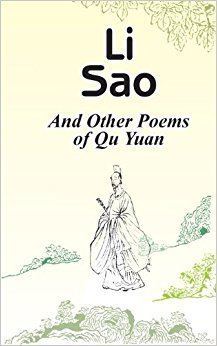Published c. 3rd century BCE | ||
 | ||
Similar Chu Ci, Classic of Poetry, Records of the Grand Historian, Spring and Autumn Annals, Heavenly Questions | ||
Chu ci li sao 4th centruy bc 2nd century by qu yuan
"Li Sao" (Chinese: 離騷; literally: "Encountering Sorrow") is a Chinese poem dating from the Warring States period of ancient China. The early poetic tradition of China survives mainly through two anthologies, one being the Chuci, the other being the formally distinct Classic of Poetry (or Shijing). The poem "Li Sao" is the lead poem and the main inspiration for the Chuci collection. This famous piece was written by the person generally known as Qu Yuan, an aristocrat of the Kingdom of Chu. In his signature poem "Li Sao", Qu Yuan manifests himself in a poetic character, which is a major landmark in the tradition of Classical Chinese poetry, contrasting with the anonymous poetic voices encountered in the Shijing and the other early poems which exist as preserved in the form of incidental incorporations into various documents of ancient miscellany. The rest of the Chuci anthology is centered on the "Li Sao", the purported biography of its author Qu Yuan, and often its innovative epic poetic lines. In the "Li Sao", the poet despairs that he has been plotted against by evil factions at court with his resulting rejection by his lord and then recounts a series of shamanistic spirit journeys to various mythological realms, engaging or attempting to engage with a variety of divine or spiritual beings, with the theme of the righteous minister unfairly rejected sometimes becoming exaggerated in the long history of later literary criticism and allegorical interpretation. Dating from the time of King Huai of Chu, in the late third century BCE, the poem "Li Sao" is a remarkable example of Chinese poetry.
Contents
- Chu ci li sao 4th centruy bc 2nd century by qu yuan
- Description
- Reissue
- Translations into Western languages
- References
Description
The "Li Sao" begins with the poet's introduction of himself, his ancestry, and some references to his current situation, and then proceeds to recount the poet's fantastical physical and spiritual trip across the landscapes of ancient China, real and mythological. "Li Sao" is a seminal work in the large Chinese tradition of landscape and travel literature. "Li Sao" is also a political allegory in which the poet laments that his own righteousness, purity, and honor are unappreciated and go unused in a corrupt world. The poet alludes to being slandered by enemies and being rejected by the king he served (King Huai of Chu).
As a representative work of Chu poetry it makes use of a wide range of metaphors derived from the culture of Chu, which was strongly associated with a Chinese form of shamanism, and the poet spends much of the "Li Sao" on a spirit journey visiting with spirits and deities. The poem's main themes include Qu Yuan's falling victim to intrigues in the court of Chu, and subsequent exile; his desire to remain pure and untainted by the corruption that was rife in the court; and also his lamentation at the gradual decline of the once-powerful state of Chu.
The poet decides to leave and join Peng Xian (Chinese: 彭咸), a figure that many believes to be the God of Sun. Wang Yi, the Han dynasty librarian who compiled the Chuci, believed Peng Xian to have been a Shang dynasty official who drowned himself after his wise advice was rejected by the king. Peng Xian may also have been an ancient shaman who later came to symbolize hermit seclusion.
The poem has a total of 373 lines, and about 2400 characters, which makes it one of the longest poems dating from Ancient China. It is in the fu style. The precise date of composition is unknown, it would seem to have written by Qu Yuan after his exile by King Huai; however, it seems to have been before Huai's captivity in the state of Qin began, in 299 BCE.
Reissue
The poem was reissued in the 19th century by Pan Zuyin (1830–90), a linguist who was a member of the Qing Dynasty staff. It was reissued as four volumes with two prefaces, one by Li Kai and the other by Xiao Yuncong.
